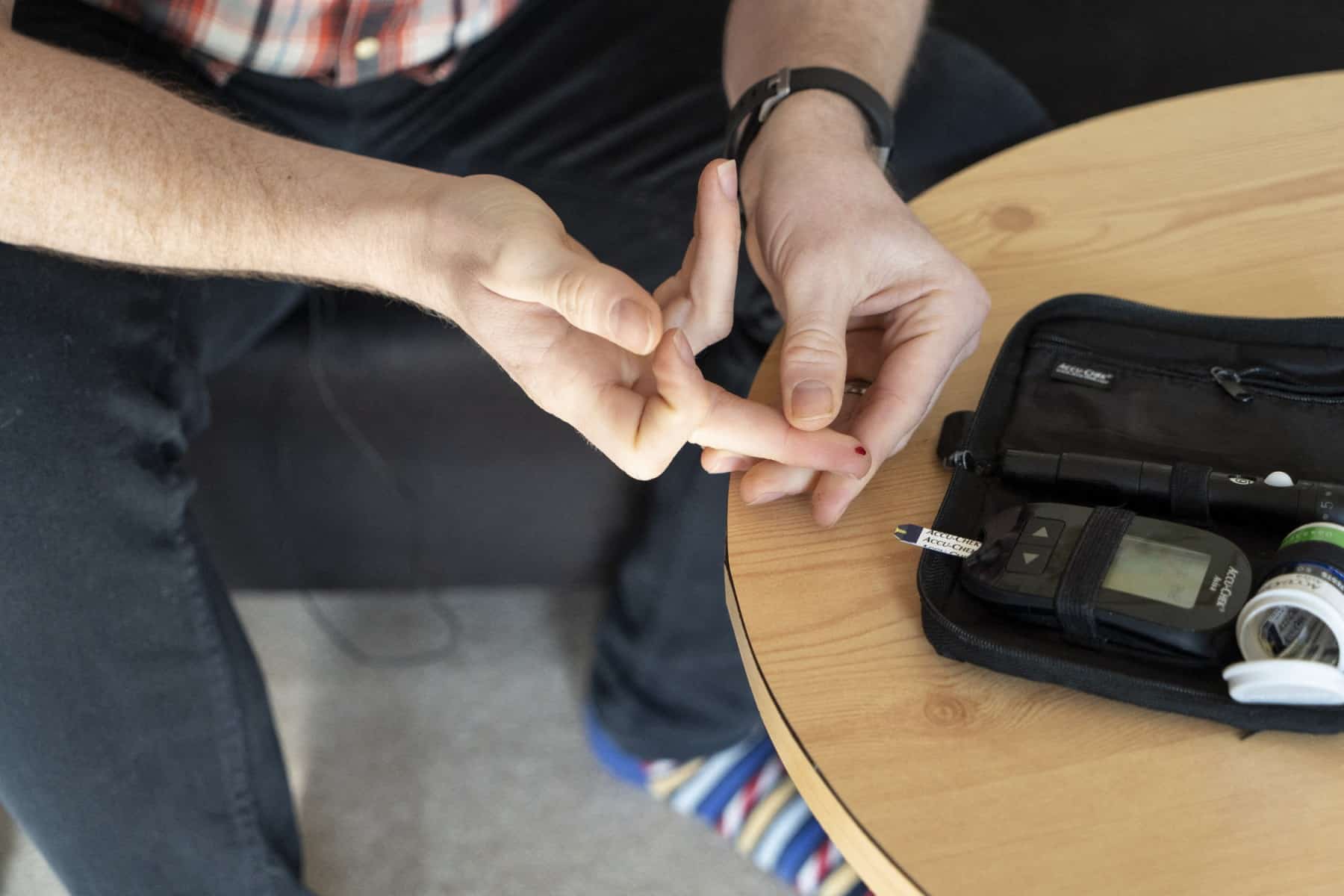
David Burns, 38, who has type 1 diabetes, uses a device to measure blood sugar levels as he prepares to adminster himself a dose of insulin in his home in North London on February 24, 2019. FILE PHOTO/Agence France-Presse
PARIS — The percentage of adults suffering from diabetes across the world has doubled over the past three decades, the biggest rises coming in developing countries, a study said Wednesday.
The serious health condition affected around 14 percent of all adults worldwide in 2022, compared to seven percent in 1990, according to the new analysis in The Lancet journal.
Article continues after this advertisementTaking into account the growing global population, the team of researchers estimated that more than 800 million people are now diabetic, compared to less than 200 million in 1990.
FEATURED STORIES GLOBALNATION Palace: Duterte free to surrender to ICC if he wishes GLOBALNATION DFA coordinating with US over detention of Garma, daughter GLOBALNATION Marcos firm on non-cooperation with ICC over Duterte drug war probeREAD: Ampalaya now a real bitter pill to treat diabetes
These figures include both main types of diabetes. Type 1 affects patients from a young age and is more difficult to treat because it is caused by an insulin deficiency.
Article continues after this advertisementType 2 mainly affects middle-aged or older people who lose their sensitivity to insulin.
Article continues after this advertisementBehind the global numbers, national figures varied widely.
Article continues after this advertisementThe rate of diabetes stayed the same or even fell in some wealthier countries, such as Japan, Canada or Western European nations such as France and Denmark, the study said.
READ: Diabetes: A bitter health crisis for Filipinos
Article continues after this advertisement“The burden of diabetes and untreated diabetes is increasingly borne by low-income and middle-income countries,” it added.
For example, nearly a third of women in Pakistan are now diabetic, compared to less than a tenth in 1990.
The researchers emphasized that obesity is an “important driver” of type 2 diabetes — as is an unhealthy diet.
The gap between how diabetes is treated in richer and poorer countries is also widening.
Three out of five people aged over 30 with diabetes — 445 million adults — did not receive treatment for diabetes in 2022, the researchers estimated.
India alone was home to almost a third of that number.
In sub-Saharan Africa, only five to 10 percent of adults with diabetes received treatment in 2022.
Some developing countries such as Mexico are doing well in treating their population — but overall the global gap is widening, they said.
“This is especially concerning as people with diabetes tend to be younger in low-income countries and, in the absence of effective treatment, are at risk of life-long complications,” said senior study author Majid Ezzati of Imperial College London.
Subscribe to our daily newsletter
Those complications include “amputation, heart disease, kidney damage or vision loss — or in some caseswinforbet gaming, premature death,” he said in a statement.
READ NEXT Trump to enter second term with almost unchecked power ‘Welcome back’: Trump, Biden shake hands in White ... EDITORS' PICK Mining in Homonhon: Feeding China’s avarice for minerals WALANG PASOK: Bicol classes suspended as storm Man-yi nears Storm surge warning up in 6 Luzon provinces due to Super Typhoon Ofel ‘Welcome back’: Trump, Biden shake hands in White House Sharon Cuneta, Gabby Concepcion reunite for ‘Dear Heart’ concert in Hawaii 8 movies to watch when you’re too down to study MOST READ West PH Sea: China’s Bajo de Masinloc claim requires stronger action – Estrada LIVE UPDATES: Super Typhoon Ofel Storm surge warning up in 6 Luzon provinces due to Super Typhoon Ofel Pagasa lifts Signal No. 5 in Cagayan as Ofel weakens Follow @FMangosingINQ on Twitter --> View comments
